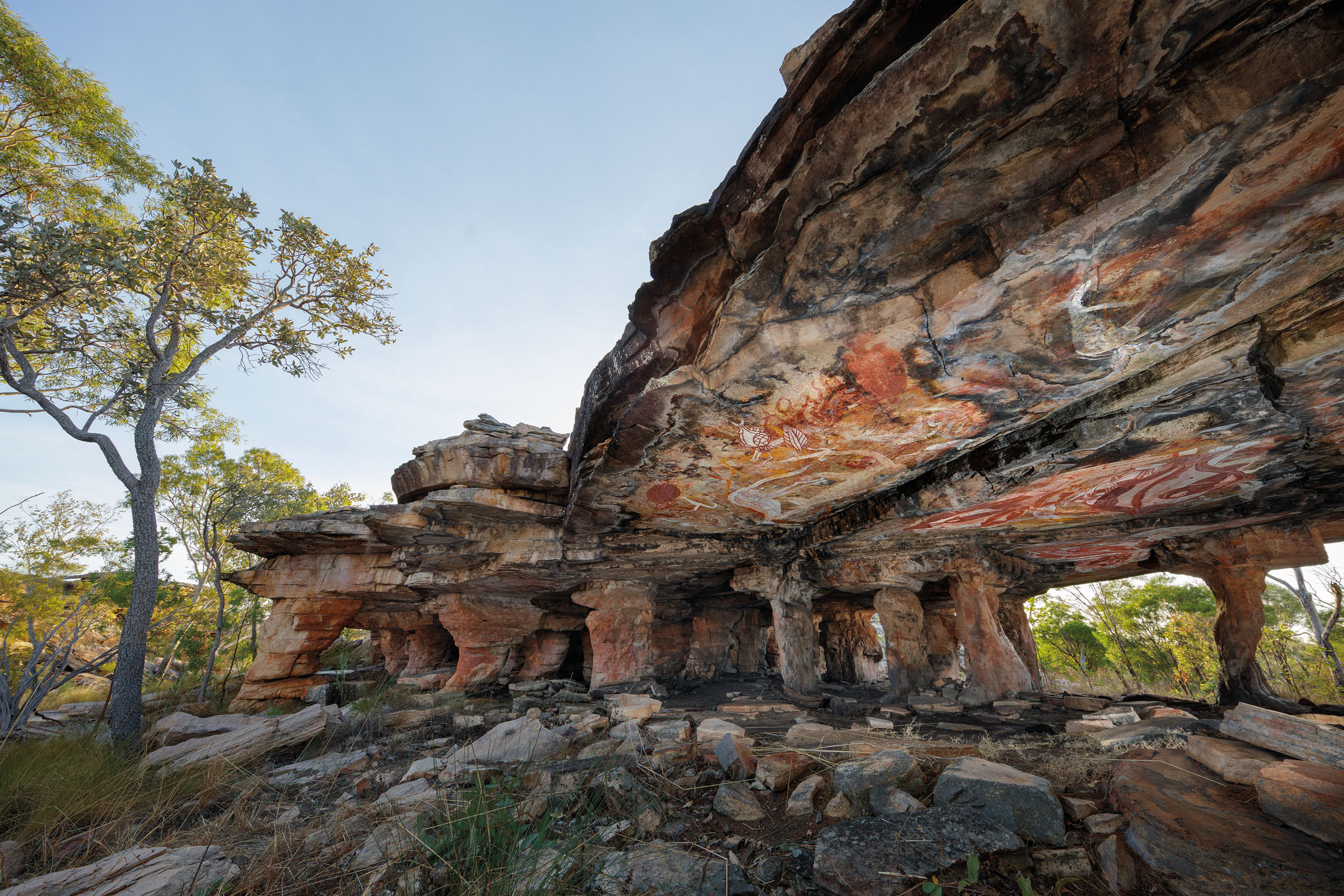Nawarla Gabarnmung has a claim to being regarded as amongst the world’s oldest works of architecture. To judge by the tools that the artisans who made it left behind, it would be another 30,000 years before work would start on the first of Egypt’s pyramids in 2650 BCE. The Australian and French archaeologists who explored the site in 2010 believe that it has been a site of human habitation for at least 44,000 years. They have some evidence to suggest that it was still an active site until the beginning of the 20th century.
Nawarla Gabarnmung is in Arnhem Land, in the far north of Australia, 2,500 miles from Sydney. It is the least Europeanised fragment of the country, one which most Australians need a permit to enter. There was a uranium mine in the 1970s, much to the distress of the Aboriginal inhabitants, and bauxite is still mined. But otherwise there are very few traces of the modern world.
In the language of the Jawoyn, the Aboriginal tribe that are its most recent custodians, the name means ‘Place of the hole in the rock’. The layers of ash on the stone floor of a 60ft square space carved out of a naturally eroded cliff, and the multiple layers of rock paintings showing barramundi fish, wallabies and crocodiles, allow for carbon dating techniques to track the time scale. The oldest surviving art is 25,000 years old. One ground edge stone axe found on the site is 35,000 years old.
This is a site that is more than the co-option of a naturally occurring rock formation. The rock roof is supported by 36 pillars of stone that would have originally been created by natural erosion on fissure lines. But the archaeologists who first encountered the site in 2006 found that the pillars have been moved and reshaped. This is a space, or a sequence of spaces, that has been consciously designed, as is demonstrated by tool marks.
To take these images, John Gollings — a photographer with a career spent in exploring architecture of every kind, from the skyscrapers of his home city of Melbourne, to Khmer cities lost in Cambodian jungles — began by getting permission to visit the site. He was introduced to Auntie Margaret, the Jawoyn elder who agreed to visit Nawarla Gabarnmung with him. The journey involved a series of flights, culminating in a helicopter ride lasting 90 minutes over an area with no roads from the closest air strip at Jabiru.
